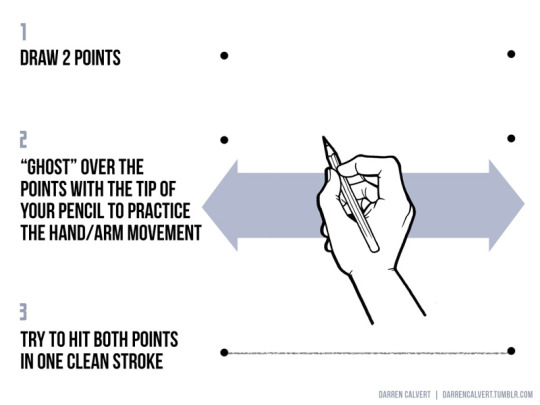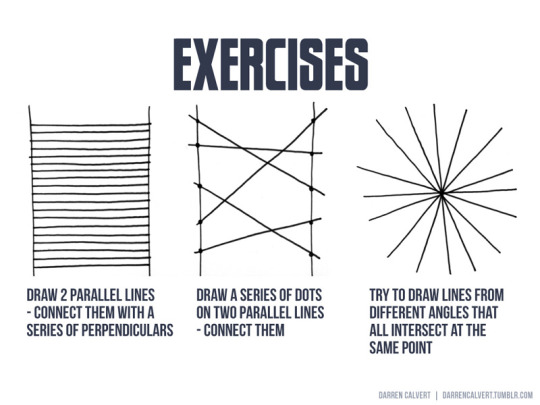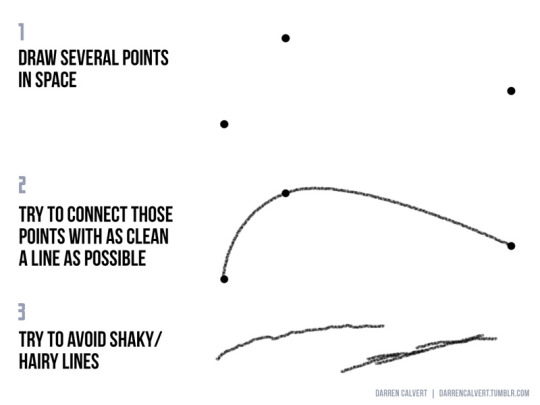Hiya! owo! I'm just a random Aussie artsy dork with a blog run by my pokesona Remi the Quilava This is a SFW mixed blog (art, ask and personal) so feel free to ask me anything, chat with me (I don't bite ;w;) or look at my (derpy) art >uremidraws Alright then; enjoy your stay~ owo/ Background created on: http://www.patterncooler.com/editor/
Don't wanna be here? Send us removal request.
Photo

チョップされてこまったぬぅ
33K notes
·
View notes
Text
Imagine Person A has a crush on Person B, but Person B doesn’t know and has a crush on someone else. Person B vents their frustrations about their unrequited crush to Person A all the time. After a particularly long rant, Person B goes “You just don’t know how bad it hurts to like someone so much and for them to have no idea how you feel”. Person A looks at them with a sad smile and says “No, I guess I don’t.”
2K notes
·
View notes
Text
can someone please be proud of me like fuck I’m trying
2M notes
·
View notes
Text
10 of the Hardest Moments Ambiverts Have In Their Lives
If you’re an ambivert, an individual who possess qualities of both introverts and extroverts, try to see if these points relate.
When you go out you wish you were home, and when you stay home you wish you went out. When you are home alone, you get a bad case of FOMO (Fear of Missing Out). Conversely, when you are out you feel that you could be getting much more done (whatever that means) when you are home.
You can never get everything done. You want to meet new people, go to new places and experience new things all while your inner introvert plans a full day of self-education and reflection. Unfortunately there aren’t 48 hours in a day so you tend to be anxious!
Keep reading
5K notes
·
View notes
Photo


#important#very important#i cant exaggerate how important this is#and how much some people i know need to hear this#reblog
2M notes
·
View notes
Photo

#reblog#i need a new tag for these type of things hm#yes more tags#nice thoughts#itll do for now lmao
2K notes
·
View notes
Text
There’s a continuous sunset traveling the world. I like to think there’s an unbroken wave of people admiring it.
2K notes
·
View notes
Photo

563K notes
·
View notes
Photo

297K notes
·
View notes
Audio
This Is Halloween - The Citizens of Halloween Town
7K notes
·
View notes
Photo






People often say to me: “You draw like some kind of inhuman machine. If I eat your brain, will I gain your power?” The answer is yes, but there is another way. The key to precise drawing is building up muscle memory so that your arm/hand/fingers do the things you want them to do when you want them to do them. Teaching yourself to draw a straight line or to make sweet curves is just a matter of practice and there are some exercises you can do to help improve. If you’re going to be doodling in class or during meetings anyway, why not put that time to good use?
#oh i should probably do these and try these out LOL#these all seem to be legit practices#well they are i can tell by looking at them#but as in will actually help me personally that i should do LOL#reblog#reference#training#drawing#exercises#practice#ref
178K notes
·
View notes
Note
OMG HAVE YOU SEEN THE TRAILER FOR THE NEW KAGEROU PROJECT ANIME!?
NO I HAVENT WHAT IS THIS ARE THEY MAKING A NEW ONE OR SOMETHING?? I MUST KNOW I SHALL CHECK IT OUT
4 notes
·
View notes
Note
What are you in terms of animology and myer briggs? By extension, are there any quizzes you particularly recommend? (p.s, you seem really awesome and I like seeing you appear on my dash, anonymous user out =v=7)
i just took the animology test~ thanks for the question~ (idk how long ago this was im so sorry :’D)
my result for the animology test was: Silver and Red Wolf (in conflict with Maroon Panda)
pls tell me that was the right test LOL. as for myer briggs, last time i took it last year, i got ISFP (and INFP on some occasions) but ive changed quite a bit since then so i wouldnt know how accurate this still is lmao. if anything probably just potentially extroverted rather than introverted nowadays.
as for quizzes id recommend... uhhh one i love second or first to myers brigg would be the enneagram personality test~ if i recall correctly, i was type 2 - the helper
again thanks for the question~ been a while since i answered a proper one haha thank you so much for the compliment omg youre a blessing anon /)w(\ im really not all that amazing, just a bit under uwu/ im pretty chill and ive been the anon before so if you ever wanna talk outside of it im totally cool with that too :P (im just an casual net dweeb) other than that hope you have a rad day anon~
1 note
·
View note
Text
Personality; not just for humans
We usually see “elephants”—or “wolves” or “killer whales” or “chimps” or “ravens” and so on—as interchangeable representatives of their kind. But the instant we focus on individuals, we see an elephant named Echo with exceptional leadership qualities; we see wolf 755 struggling to survive the death of his mate and exile from his family; we see a lost and lonely killer whale named Luna who is humorous and stunningly gentle. We see individuality. It’s a fact of life. And it runs deep. Very deep.
Individuality is the frontier of understanding non-human animals. But for decades, the idea was forbidden territory. Scientists who stepped out of bounds faced withering scorn from colleagues. Jane Goodall experienced just that. After her first studies of chimpanzees, she enrolled as a doctoral student at Cambridge. There, as she later recalled in National Geographic, “It was a bit shocking to be told I’d done everything wrong. Everything. I shouldn’t have given them names. I couldn’t talk about their personalities, their minds or their feelings.” The orthodoxy was: those qualities are unique to humans.
But these decades later we are realizing that Goodall was right; humans are not unique in having personalities, minds and feelings. And if she’d given the chimpanzees numbers instead of names?—their individual personalities would still have shined.
“If ever there was a perfect wolf,” says Yellowstone biologist Rick McIntyre, “It was Twenty-one. He was like a fictional character. But real.” McIntyre has watched free-living wolves for more hours than anyone, ever.
Even from a distance Twenty-one’s big-shouldered profile was recognizable. Utterly fearless in defense of his family, Twenty-one had the size, strength, and agility to win against overwhelming odds. “On two occasions, I saw Twenty-one take on six attacking wolves—and rout them all,” Rick says. “Watching him felt like seeing something that looked supernatural. Like watching a Bruce Lee movie. I’d be thinking, ‘A wolf can’t do what I am watching this wolf do.’” Watching Twenty-one, Rick elaborates, “was like watching Muhammad Ali or Michael Jordan—a one-of-a-kind talent outside of ‘normal.’”
Twenty-one was a superwolf. Uniquely, he never lost a fight and he never killed any defeated opponent. And yet Twenty-one was “remarkably gentle” with the members of his pack. Immediately after making a kill he would often walk away and nap, allowing family members who’d had nothing to do with the hunt eat their fill.
One of Twenty-one’s favorite things was to wrestle little pups. “And what he really loved to do,” Rick adds, “was pretend to lose. He just got a huge kick out of it.” Here was this great big male wolf. And he’d let some little wolf jump on him and bite his fur. “He’d just fall on his back with his paws in the air,” Rick half-mimes. “And the triumphant-looking little one would be standing over him with his tail wagging.
“The ability to pretend,” Rick adds, “shows that you understand how your actions are perceived by others. I’m sure the pups knew what was going on, but it was a way for them to learn how it feels to conquer something much bigger than you. And that kind of confidence is what wolves need every day of their hunting lives.”
In Twenty-one’s life, there was a particular male, a sort of roving Casanova, a continual annoyance. He was strikingly good-looking, had a big personality, and was always doing something interesting. “The best single word is ‘charisma,’” says Rick. “Female wolves were happy to mate with him. People absolutely loved him. Women would take one look at him—they didn’t want you to say anything bad about him. His irresponsibility and infidelity; it didn’t matter.”
One day, Twenty-one discovered this Casanova among his daughters. Twenty-one ran in, caught him, biting and pinning him to the ground. Other pack members piled in, beating Casanova up. “Casanova was also big,” Rick says, “but he was a bad fighter.” Now he was totally overwhelmed; the pack was finally killing him.
“Suddenly Twenty-one steps back. Everything stops. The pack members are looking at Twenty-one as if saying, ‘Why has Dad stopped?’” The Casanova wolf jumped up and—as always—ran away.
After Twenty-one’s death, Casanova briefly became the Druid pack’s alpha male. But, Rick recalled: “He doesn’t know what to do, just not a leader personality.” And although it’s very rare, his year-younger brother deposed him. “His brother had a much more natural alpha personality.” Casanova didn’t mind; it meant he was free to wander and meet other females. Eventually Casanova and several young Druid males met some females and they all formed the Blacktail pack. “With them,” Rick remembers, “he finally became the model of a responsible alpha male and a great father.”
The personality of a wolf ‘matriarch’ also helps shape the whole pack. Wolf Seven was the dominant female in her pack. But you could watch Seven for days and say, ‘I think she’s in charge,’ because she led subtly, by example. Wolf Forty, totally different; she led with an iron fist. Exceptionally aggressive, Forty had done something unheard of: actually deposed her own mother.
For three years, Forty ruled the Druid pack tyrannically. A pack member who stared a moment too long would find herself slammed to the ground, Forty’s bared canines poised above her neck. Yellowstone research director Doug Smith recalls, “Throughout her life she was fiercely committed to always having the upper hand, far more so than any other wolf we’ve observed.” Forty heaped her worst abuse on her same-age sister. Because this sister lived under Forty’s brutal oppression, she earned the name Cinderella.
One year Cinderella split from the main pack and dug a den to give birth. Shortly after she finished the den, her sister arrived and delivered one of her infamous beatings. Cinderella just took it, as always. No one ever saw any pups at that den.
The next year, Cinderella, Forty, and a low-ranking sister all gave birth in dens dug several miles apart. New wolf mothers nurse and guard constantly; they rely on pack members for food. That year, few pack members visited the bad-tempered alpha. Cinderella, though, found herself well assisted at her den by several sisters.
Six weeks after giving birth, Cinderella and several attending pack members headed out, away from her den—and stumbled into the queen herself. Forty immediately attacked Cinderella with was, even for her, exceptional ferocity. She then turned her fury onto another of her sisters who’d been accompanying Cinderella, giving her a beating too. Then as dusk settled in, Forty headed toward Cinderella’s den. Only the wolves saw what happened next, but Doug Smith and Rick McIntyre pieced together what went down.
Unlike the previous year, this time Cinderella wasn’t about to remain passive or let her sister reach her den and her six-week-old pups. Near the den a fight erupted. There were at least four wolves, and Forty had earned no allies among them.
At dawn, Forty was down by the road covered in blood, and her wounds included a neck bite so bad that her spine was visible. Her long-suffering sisters had, in effect, cut her throat. She died. It was the only time researchers have ever known a pack to kill its own alpha. Forty was an extraordinarily abusive individual. The sisters’ decision, outside the box of wolf norms, was: mutiny. Remarkable.
But Cinderella was just getting started. She adopted her dead sister’s entire brood. And she also welcomed her low-ranking sister and her pups. And so that was the summer that the Druid Peak pack raised an unheard-of twenty-one wolf pups together in a single den.
Out from under Forty’s brutal reign, Cinderella developed into the pack’s finest hunter. She later went on to become the benevolent matriarch of the Geode Creek pack. Goes to show: a wolf, as many a human, may have talents and abilities that wither or flower depending on which way their luck breaks.
“Cinderella was the finest kind of alpha female,” Rick McIntyre says. “Cooperative, returning favors by sharing with the other adult females, inviting her sister to bring her pups together with her own while also raising her vanquished sister’s pups—. She set a policy of acceptance and cohesion.” She was, Rick says, “perfect for helping everyone get along really well.”
(This piece is adapted from Carl Safina’s most recent book, Beyond Words; What Animals Think and Feel, which will is newly out in paperback)
#woah wolf shiet#locke ref#locke#pmdu shizzle#reblog#wolf#this stuff in general is interesting tho omg
37K notes
·
View notes







